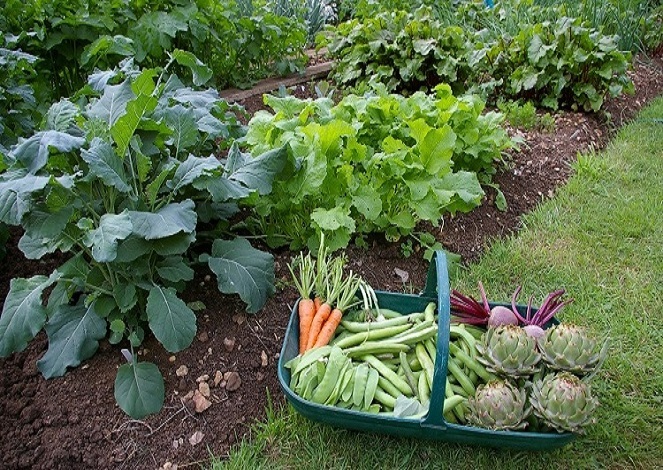Urban gardening makes use of rooftops, balconies, alleyways, sidewalks or whatever little space the gardener has available.
If you are new to growing vegetables in containers, here are a few tips to help you succeed.
- Container Selection
Select as large a container as possible. Small containers dry out more quickly and need daily watering. Self-watering planters designed for urban balconies and patios extend the time between watering. Even fabric pots are good for growing vegetables with the colorful Grow Bag line; you can add some whimsy to your vegetable garden. Remember that the deeper the pot, the larger the reservoir of moist soil and the less often you’ll need to water. The exception is a Self-Watering Planter. In this case, the depth of the planting area can be kept to a minimum because moisture is provided by a water reservoir below the planting area.
2. Soil
Do not fill your containers with soil from your garden or bagged topsoil. You should fill the containers with a “soilless” blend that will retain moisture and resist compaction, such as Container Mix. Usually, mix in a liberal amount of granular organic fertilizer and a shovel-full or so of compost.
3. Water
Vegetables require a consistent supply of water to perform their best. Inconsistent moisture causes lots of problems, such as blossom drop, poor root development, leaf curling, insect problems, and rot. The best way to ensure your plants always have a consistent supply of water is to use a self-watering planter. Filling the reservoir every few days is all that’s required. The plants absorb moisture as they need it.
4. Fertilizer
Fertilizer is especially important when you’re growing vegetables in containers. In fact, you just won’t succeed if you don’t use some kind of fertilizer. I recommend mixing a granular organic All-Purpose Fertilizer into the soil when planting, then weekly feeding with a water-soluble fertilizer, such as Plant Health Care.
If aphids, mites, or whiteflies attack, spray insecticidal soap or horticultural oil. Handpick and destroy tomato hornworms.
Pick crops when they’re ripe: beans before the seeds swell inside the pods; cucumbers and squash when fruits are fully expanded but not seedy; peppers when fully grown and showing appropriate color (green, red, or another shade); tomatoes when fully colored (red, orange, or yellow).

